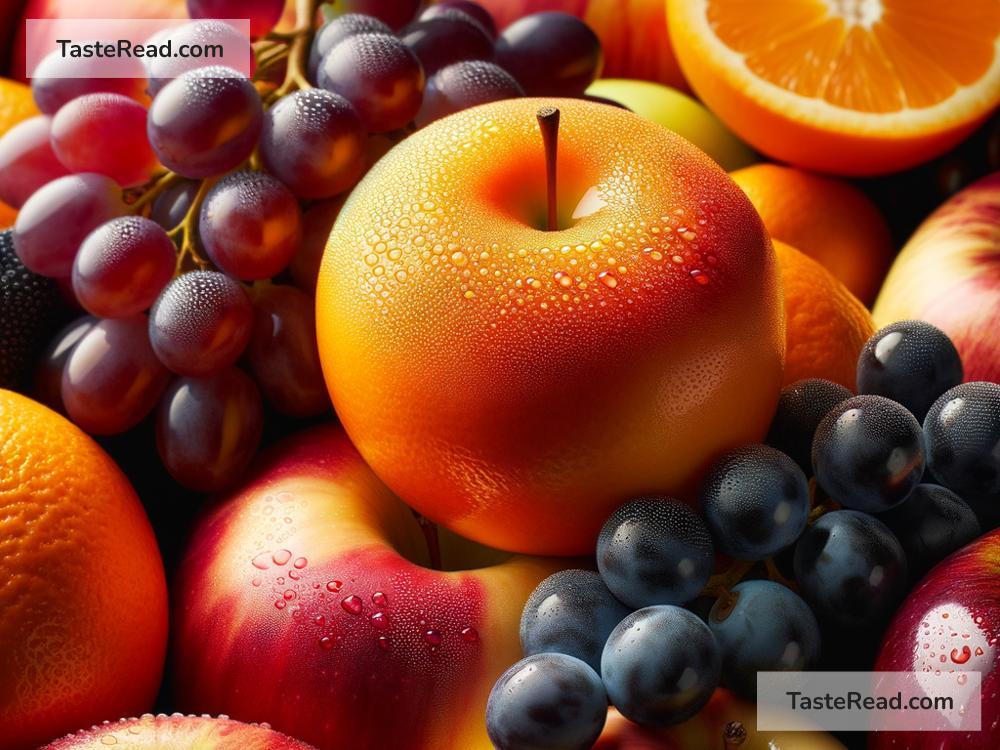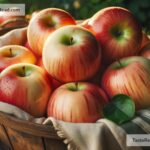The Role of Natural Wax Layers in Fruit Flavor Preservation
Have you ever wondered why fruit tastes fresher when it’s freshly picked or why some fruits stay juicy and flavorful longer than others? The answer lies in a fascinating and natural feature of fruits: their waxy layer. This thin, glossy coating plays a vital role in protecting and preserving the flavor of fruits, ensuring that every bite remains delicious and nutritious for as long as possible. Let’s dive deeper into why this wax layer matters and how it works.
What is the Natural Wax Layer?
The natural wax layer is a coating that covers the skin of many fruits, including apples, pears, plums, grapes, and citrus fruits like oranges and lemons. This wax is produced by the fruit itself as part of its growth process. It’s made mostly of lipids, which are fat-like molecules, and other natural substances. The wax gives fruit its shiny appearance and smooth texture, but it does much more than just look good.
Why Do Fruits Have a Wax Layer?
Fruits grow in the open environment, where they are exposed to wind, rain, sun, pests, and microbes. The wax layer serves as the fruit’s natural defense system, helping it survive in these tough conditions. Its main purpose is to protect the fruit’s skin from damage and dehydration. By sealing the surface, the wax layer reduces water loss, helps prevent contamination by bacteria or fungi, and shields the fruit from harmful UV rays from the sun. All of these protections contribute to keeping the fruit juicy, fresh, and flavorful.
How Does the Wax Layer Affect Flavor?
Flavor is one of the most enjoyable aspects of fruit consumption. But what keeps the flavor intact even after a fruit is picked? Here’s where the wax layer plays an essential role:
-
Maintains Moisture: Fruits are made up of mostly water, and this moisture is crucial for their taste and texture. Without the wax layer, fruits would lose water faster, leading to dryness and a less appealing texture. The wax locks in the moisture, helping fruits stay juicy and flavorful.
-
Preserves Nutrients: The flavor of fruit comes from a combination of sugars, acids, and aromatic compounds. If air and microbes get inside the fruit, they can break down these compounds over time. The wax acts as a barrier, reducing exposure to oxygen and slowing down the breakdown of these flavorful elements.
-
Prevents Spoilage: Fruits without their waxy coating are more vulnerable to microorganisms such as bacteria and fungi. These organisms can cause fruits to rot or decay quickly, which negatively impacts their flavor. The wax layer acts like a natural armor, keeping those microbes out and preserving freshness for longer periods.
What Happens When the Wax Layer is Removed?
If you’ve ever washed fruit or peeled certain types, you may have noticed that the wax layer can be removed. For example, when you scrub apples or polish citrus fruits, some of the wax might come off. While washing fruits is important to remove dirt and pesticides, the absence of the wax layer can make the fruit more prone to losing water and nutrients.
Similarly, in commercial fruit production, fruits are often washed and processed to prepare them for shipping and selling. During this process, the natural wax layer can be removed. To compensate, manufacturers sometimes apply a food-grade artificial wax to mimic the protection provided by the natural wax. However, artificial waxes may not work as effectively as the fruit’s original coating and might alter the fruit’s natural flavor preservation.
The Importance of Keeping the Wax Layer Intact
For consumers, one of the best ways to enjoy flavorful fruit is to respect the natural wax layer. Here are a few tips:
-
Choose Fresh Fruits: Buy fruits that still have their natural shine, which is a sign that their wax layer is intact. Farmers’ markets and local farms often sell fruits freshly picked with their wax layer untouched.
-
Avoid Overwashing: While washing fruit is important to eliminate dirt and potential contaminants, don’t over-wash, scrub, or peel the fruit unnecessarily. This can strip away the natural wax and reduce the fruit’s ability to stay flavorful.
-
Store Fruits Properly: Keeping fruits in a cool, dry place can allow their natural wax layer to do its job longer, minimizing water loss and spoilage.
Final Thoughts
The natural wax layer is one of nature’s clever inventions. It’s a tiny yet powerful shield that protects fruits, helping them stay delicious and nutritious after they are picked. By preserving moisture, nutrients, and freshness, it ensures that the fruit’s flavor remains intact for as long as possible. Next time you bite into a juicy apple or savor the sweetness of a grape, take a moment to appreciate nature’s thoughtful design. That little waxy coating is doing more for your enjoyment than meets the eye!


